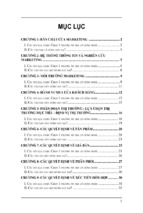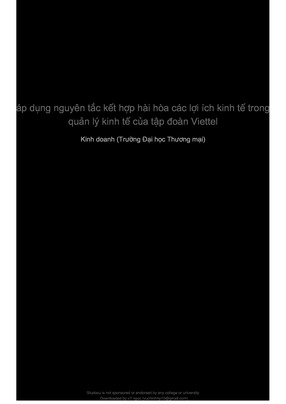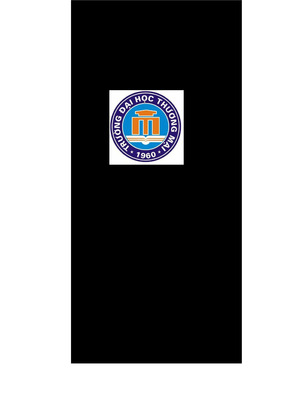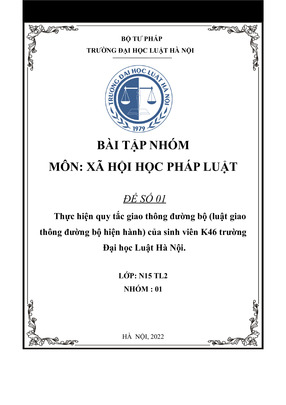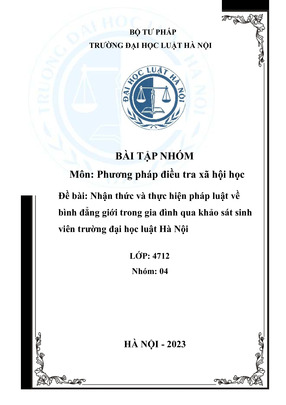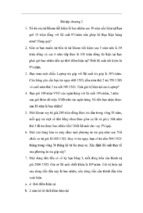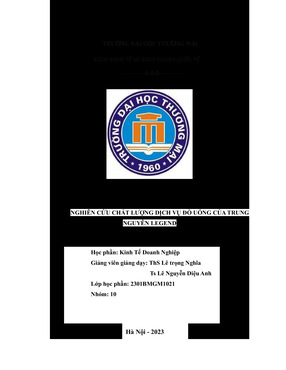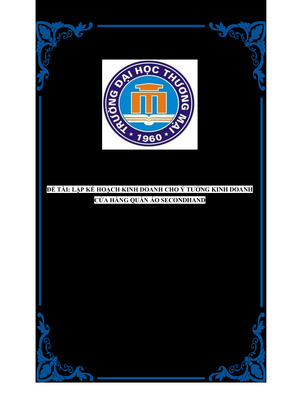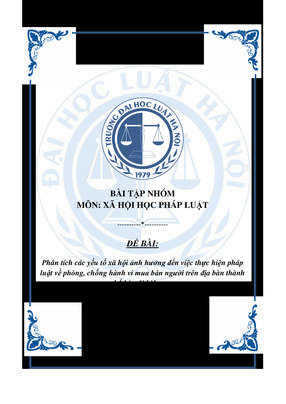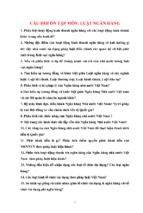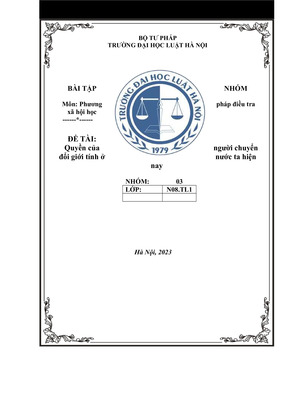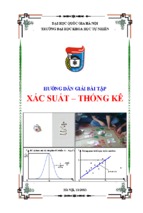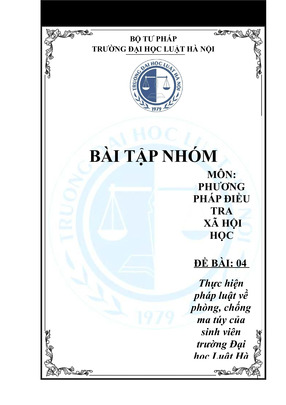STATEMENT OF AUTHORSHIP
I certify that this thesis entitled “Third-year students’ essay writing
errors: an analysis at Thu Dau Mot University” is my own work
This thesis has not been submitted for the award of any degree or diploma
in any other tertiary institution.
Binh Duong, November 20th, 2018
Trịnh Huỳnh Chấn
i
ACKNOWLEDGEMENTS
First of all, I would like to express my sincere gratitude to my
supervisor, Dr. Nguyen Hoang Tuan, who has given me helpful advice and
guidance for the accomplishment of the study.
I must acknowledge my great indebtedness to some of the instructors
at Thu Dau Mot University for their helpful instruction and interviewing
answers in the completion of this thesis.
I am also grateful to a great number of my students for their help with
the data collection for the study.
Last but not least, I would like to express my thanks to my family, my
parents, especially my wife for their love and support. Without my wife‟s
understanding and enthusiastic help, this thesis could not be fulfilled.
ii
ABSTRACT
The thesis studies the common errors that students of the English language
in Thu Dau Mot University often commit when they are write essays. In other
words, the thesis was written for the purpose of identifying and analyzing some
common errors that undergraduate students often make while writing English
compositions. After finishing the research, the researcher hopes to find out the
problems that students often meet when writing English essays and have some
methods to help them learn English better.
The method mainly used in the study was the combination of qualitative
and quantitative methods. Two questions were designed to give to some
instructors of the Faculty of Foreign Languages in order to find out the reason
why students made these kinds of errors and suggested some of the best methods
for instructing students how to write essays with the least amount of errors. After
receiving the instructors‟ responses, the researcher could withdraw some English
teaching and learning methods for teachers and students in Thu Dau Mot
University.
The findings indicate that students of the Faculty of Foreign Languages
usually commit morphological, lexical, syntactic and mechanical errors. In
addition to these errors, text structure errors are also found in the students‟
essays. And from the study findings, some solutions and implications were
suggested as useful contributions to English learners and English teachers for the
teaching of writing at the Faculty of Foreign Languages to meet the AUN
standards.
iii
TABLE OF CONTENTS
STATEMENT OF AUTHORSHIP ..................................................................... i
ACKNOWLEDGEMENTS ................................................................................ iii
ABSTRACT ......................................................................................................... iii
TABLE OF CONTENTS ................................................................................... iiv
LIST OF TABLES ............................................................................................. vii
LIST OF FIGURES .......................................................................................... viii
ABBREVIATIONS ............................................................................................. ix
CHAPTER I. INTRODUCTION ........................................................................ 1
1.1. Background to the study ......................................................................... 1
1.2. Statement of the problems....................................................................... 3
1.3. Purposes of the study .............................................................................. 5
1.4. Research questions .................................................................................. 5
1.5. Significance of the study ......................................................................... 6
1.6. Organization of the study ........................................................................ 6
CHAPTER II. LITERATURE REVIEW .......................................................... 7
2.1. Essay ....................................................................................................... 7
2.1.1. Concepts of word, sentence, paragraph and essay............................ 7
2.1.2. Structure of an essay ....................................................................... 10
2.1.3. Components of an essay ................................................................. 10
2.2. Errors in essay writing .......................................................................... 11
2.2.1. Definition of error ........................................................................... 11
2.2.2. The significance of error ................................................................. 12
2.2.3. Classification of errors .................................................................... 13
2.3. Error analysis ........................................................................................ 16
2.3.1. Definition of error analysis ............................................................. 16
2.3.2. Models for error analysis ................................................................ 17
2.3.3. Research gaps ................................................................................. 17
2.4. Summary ............................................................................................... 18
iv
CHAPTER III: METHODOLOGY ................................................................. 19
3.1. Research setting .................................................................................... 19
3.2. Research design ..................................................................................... 19
3.3. Research participants ............................................................................ 20
3.4. Research ethics ...................................................................................... 21
3.5. Research instruments ............................................................................ 22
3.6. Data collection and data analysis .......................................................... 22
3.7. Reliability and validity .......................................................................... 23
3.8. Summary ............................................................................................... 23
CHAPTER IV: FINDINGS AND DISCUSSION ............................................ 24
4.1. Error analysis ........................................................................................ 24
4.1.1. Morphological errors ...................................................................... 25
4.1.1.1. Verbs errors ............................................................................. 26
4.1.1.2. Noun ending errors .................................................................. 29
4.1.1.3. Article or determiner errors ..................................................... 30
4.1.2. Lexical errors .................................................................................. 32
4.1.2.1. Errors in word choice .............................................................. 33
4.1.2.2. Errors in word form ................................................................. 34
4.1.2.3. Preposition errors .................................................................... 35
4.1.2.4. Pronoun errors ......................................................................... 36
4.1.2.5. Spelling errors ......................................................................... 36
4.1.3. Syntactic errors ............................................................................... 38
4.1.3.1. Word order .............................................................................. 38
4.1.3.2. Omitted words or phrases ........................................................ 39
4.1.3.3. Run-on sentences and comma splices ..................................... 40
4.1.3.4. Sentence fragments.................................................................. 42
4.1.4. Mechanical errors ........................................................................... 44
4.2. Essay organization ................................................................................ 45
4.2.1. Thesis statement .............................................................................. 46
4.2.2. Organization of supporting paragraphs in an essay ........................ 50
v
4.2.3. Conclusion (concluding paragraph) ................................................ 53
4.3. Summary ............................................................................................... 54
CHAPTER FIVE: CONCLUSION AND IMPLICATION ........................... 55
5.1. Conclusions ........................................................................................... 55
5.2. Implications ........................................................................................... 57
5.3. Limitations and suggestions for further studies .................................... 60
REFERENCES ................................................................................................... 62
APPENDICES .................................................................................................... 69
vi
LIST OF TABLES
Table 4.1: Categories of errors in the students‟ essays
Table 4.2: Morphological errors in the students‟ essays
Table 4.3: Verb errors in the students‟ essays
Table 4.4: Noun ending errors in the students‟ essays
Table 4.5: Article or determiner errors in the students‟ essays
Table 4.6: Lexical errors in the students‟ essays
Table 4.7: Syntactic errors in the students‟ essays
Table 4.8: Mechanical errors in the students‟ essays
Table 4.9: Errors about the thesis statement in the students‟ essays
Table 4.10: Errors about the organization of supporting paragraphs
Table 4.11: Errors about the concluding paragraph in the students‟ essays
vii
LIST OF FIGURES
Figure 4.1: Categories of errors in the students‟ essays
Figure 4.2: Errors about the thesis statement in the students‟ essays
Figure 4.3: Errors about the organization of supporting paragraphs
Figure 4.4: Errors about the concluding paragraph in the students‟ essays
viii
ABBREVIATIONS
EFL
English as a Foreign Language
L1
first language, mother tongue
L2
second language
TOEIC
Test of English for International Communication
TOEFL
Test of English as a Foreign Language
IELTS
International English Language Testing System
MA
Master of Arts
AUN
ASEAN University Network
ix
CHAPTER I. INTRODUCTION
1. 1. Background to the study
Foreign language learning in Vietnam has been much affected by the
political and economic system of the country for a long time. Before the
independence of Vietnam, French was widely used in the north of Vietnam while
English was used in the south. English was learned as an optional subject in most
Vietnamese high schools in the south. However, after the National Reunification,
the Ministry of Education and Training required Vietnamese students to learn
Russian due to the socio-economy and diplomatic relations of Vietnam and
Russia. When Vietnam began its open-door policy in 1986, it attracted plenty of
tourists and investors from English and non-English speaking countries. At that
time, English became important in Vietnam again and was strongly supported by
a variety of jobs.
In recent years, English has had certain contributions on the development
of many aspects of Vietnam‟s society. A large number of students choose
English to master these days. However, the majority of these students are non English major students. They specialize in other majors and study English as a
minor or conditional subject. Most of them find English more beneficial than any
other foreign languages and they seem better motivated to learn English. They
study English not only to succeed in their examinations but also to find better
jobs in the future. Because of this reason, students have spent much time learning
English day by day. However, a great number of students in Vietnam, especially
non-English majors, do not have the best strategies to effectively learn English.
Many students just memorize new words and grammar rules mechanically. This
method should be replaced by a more efficient strategy to learning English.
Some teachers think that students can achieve vocabulary and grammar by
themselves so the methodology of teaching English vocabulary has not changed
much. Some teachers have undervalued vocabulary learning strategies. Students
often use a passive way of learning vocabulary and grammar rules. Therefore,
1
most of English learners‟ essays contain errors of various types. Grammatical
and lexical errors are the most common. All of these kinds of errors significantly
affect the quality of a good essay. They can lead directly to misinterpretation of
the overall meaning.
For this reason, a great number of people all over the world have carried
out research about error analysis. Saenchan (2006) carried research on lexical
errors in Thai learners‟ English compositions. In this research, the researcher
used an error taxonomy based on James (1998) to analyze Thai third-year
university students‟ English compositions for lexical errors. The author‟s
analysis revealed that the most errors were “near synonyms”. The next errors that
students often committed were “preposition” and “suffixes”. Students had more
difficulty with semantics than the forms of words. When inappropriate lexical
choices are made, this can lead directly to misunderstanding of the message.
Corder (1973) indicates that learning a new language requires trial and error
approach. The researcher emphasizes on the necessity to study learner errors in
EFL acquisition. The effect of analyzing the errors on writing is very useful
because they help teachers know about their students‟ writing competence.
Although error analysis has been a concern since the 1970s in the field of
foreign language teaching in many countries throughout the world, this research
trend has been carried out up to now. At Thu Dau Mot University, due to the
lack of research on error analysis, it is imperative to learn more about this. In
terms of practicality, properly assessing the English language proficiency in
written form of English language students will help teachers much in teaching
this international language. The research result will also help the managers and
instructors in the Faculty of Foreign Languages to improve their “Course
syllabus” in order to meet the demands of AUN integration of Thu Dau Mot
University. The “Course syllabus” of the Faculty of Foreign Languages is
included in the first appendix of this thesis. In terms of pedagogical improvement
research, specific research on this area in the context of a university in Vietnam
will provide information and documentation for more extensive future research.
2
1. 2. Statement of the problems
Despite the importance of writing, the teaching and learning of writing in
class do not occur smoothly. According to the result of the research which was
conducted in Nguyen Hue High School in 2008, over 65% of major high school
students in this school found writing the most difficult skill. The researcher
found that writing was difficult to high school students because they did not like
this skill. They were forced to study so they did not pay much attention to this
skill. Moreover, the high school students seldom used this skill in real life except
for the English writing lessons in class. Most of them were not interested in
writing because at this time they just had to take the grammar based final
university entrance exam, a traditional form which mainly tests the grammar and
vocabulary. Vietnamese students and teachers concentrated on grammar lessons
with the hope that their students might get the highest results in their future final
exams. For these reasons, many students lacked the motivation in learning
writing. Teachers of writing classes in Vietnamese high schools usually meet a
great number of students who have a good amount of English vocabulary and
grammar rules. However, they rarely put that knowledge in to practical use. In
many cases, the majority of these students are still translating words, phrases,
and sentences from Vietnamese to English with strange results. Because of the
above reasons, people who become students in the university, where writing is
one of their compulsory subjects, find writing skill the most difficult to learn.
Many instructors of English in the Faculty of Foreign Languages in Thu
Dau Mot University often complain that they feel unsatisfied with their teaching
of writing. Even though they try to find good ways to make writing activities
more interesting and effective, they see a lack of interest from their students
during writing activities in class. Although English instructors in Thu Dau Mot
University show great interest in new methodologies in teaching, their students
still make a lot of errors in their writing. Some of their students even make
common errors which students in high school often commit. When the teacher
corrects a student‟s mistakes, he tries his best to give the right answer for them
3
but they do not seem to recognize it or learn anything from their errors. As the
result, the students will continue to make the same written errors again and
again. Many of these students have to study this subject again many times
because their writing skill has not been much improved.
According to some instructors‟ opinions, language teachers should let
their students correct their own errors before the correction of the teacher.
Students are able to learn many things while correcting their own mistakes.
Hermquist et al (1993) points out that students have the ability to correct
themselves if they are given hints or cues. In this way, their linguistic ability is
activated more efficiently. Waltz (1982) claims that students can correct between
fifty and ninety percent of their errors when they are given enough time. They
may learn more from correcting themselves than by having their teachers correct
them. Both Corder (1967) and James (1998) reveal a criterion which is called
“the self-correct ability criterion” that helps us to make a distinction between
mistakes and errors. A mistake can be self-corrected but an error cannot. It is
thought that a mistake is a learning step. When a student makes a mistake, it
means the student is trying out something new. It means real learning is taking
place in the lesson. However, after applying this method to teach my students a
few times, the researcher realizes that many students do not like correcting each
other and do not like being corrected by their friends, either. A great number of
leaners do not have the ability to correct their own errors or correct the errors of
others. In my opinion, to have a better result, the teacher should correct the main
errors of the students first and then instruct them how to correct their partner‟s
errors. The mistakes are not significant to the process of learning so they can be
self-corrected by the writer. On the other hand, Corder (1974) further states a
learner cannot self-correct an error because that is a product reflecting their
current state of L2 development. Selinker (2001) also writes, although errors are
likely to occur frequently, they are not recognized by the learner. In some cases,
errors should be ignored. However, Holley and Kind (1974) pointed out that
teachers should avoid using correction strategies because it might embarrass,
4
frustrate and prevent students from communicating. George (1972) suggested
that ignoring errors encourages students to communicate better.
1.3. Purposes of the study
Up to now, there have been many different ideas about how to correct
language learner‟s errors. Is it necessary to find out the common errors that
English learners often make when writing? Teachers‟ answers are different from
one another. According to the researcher‟s viewpoint, carrying out serious
research about this matter is imperative. However, up to now there has not been
any research about error analysis in Thu Dau Mot University. In such a situation,
the researcher has a desire to identify and analyze some of the common errors
that undergraduate students often make while writing English essays. After
finishing the research, the researcher hopes to find out the problems that students
meet when writing essays and have some contribution to teaching and learning
this skill at Thu Dau Mot University. Currently, Vietnamese English learner‟s
grammatical and lexical errors are serious and frequently occur, they remain
under-research area in Binh Duong. To help the students write English correctly,
the researcher should analyze their lexical errors which may be influenced by the
writer‟s mother tongue (Swan, 1977) or from difficulties stemming from the
words themselves (Laufer, 1977), grammatical errors and errors of using
discourses. Moreover, in writing, students do not have the ability of fluently
using the structure of a paragraph or a composition. Their writings sometimes
lack the topic sentence or their essays do not usually have the thesis statement or
a conclusion. In addition to this matter, some students do not know how to
properly use transitional words or conjunctions in their writing.
1.4. Research questions
To have best research results, the following research questions will help
the researcher to identify and analyze the error types in the students‟ English
compositions in the Faculty of Foreign Languages at Thu Dau Mot University.
1. What kinds of errors are more often made by the students?
2. What causes those kinds of errors?
5
1.5. Significance of the study
The research is carried out in the hope of encouraging the teachers in
English in higher education to use suitable way to teach or instruct students how
to write perfect English essays with the least errors. Besides, success of this
study can support the teachers with various types of error analysis. The
researcher chooses to study this area because he sees that students make so many
errors when writing essays. Making too many errors while writing is
unacceptable in this academic world, Therefore, the research is useful to teachers
who want their students to have good essays whenever they need to write essays.
The success of this research will help the managers and instructors of the Faculty
of Foreign Languages improve the “course syllabus” which is included in the
appendix of this thesis to meet the AUN standards.
1.6. Organization of the study
The thesis consists of chapter 1 (Introduction), chapter 2 (Literature
Review), chapter 3 (Methodology), chapter 4 (Results, analysis and discussion),
chapter 5 (Conclusions and Implications)
Chapter one introduces the researcher‟s aim, the background to the study,
the statement of the problem, the research questions, and the organization of the
study, the scope of the study, the significance of the study and especially, the
researcher will introduce the motivation of this research.
Chapter two provides a review of related theories, error analysis, the
importance of error and error analysis. It provides some concepts about essays
and paragraphs. It also provides some definition of errors, mistakes, etc.
Chapter three describes research site, participants, research design,
research procedure and research instruments used in this study. The researcher
also talks about ethical issues in doing research.
Chapter four reports the results from data collected by means of the
research instruments and discussion of the findings in this study.
Chapter five concludes the important research results, implications,
recommendations, limitations of the study and suggestions for further research.
6
CHAPTER II. LITERATURE REVIEW
Language is the ability of humans to acquire and use complex systems
of communication. People use language to transfer their thoughts and feelings to
one another and only humans use language for communication. It is the humans‟
ability of using language for the purpose of communication that distinguishes
humans from other animals. The word “language” is used to refer to several
kinds of human activities such as the language of music, language of circus, and
so on. However, in order to communicate with one another, human beings often
focus on oral and written form. People have a tendency to distinguish between
language and other forms of communication. One of the most popular
communications is writing. People often write to each other using many kinds of
written form such as letters, emails, essays, research papers, etc. However, do we
ever wonder what is a letter? What is an essay? What is a research paper? Do we
make errors when we write these things? In this chapter, the researcher focuses
on concepts such as paragraphs, essays, errors in writing essays and error
analysis. These concepts will be discussed at length.
2.1. Essay
2.1.1. Concepts of word, sentence, paragraph and essay
In the written form of languages, the fundamental units consist of words,
phrases, sentences, paragraphs and essays. Most writers use words and grammar
rules to make sentences. They use sentences to make paragraphs and many
paragraphs to make compositions such as letters, reports or even research papers.
According to Keith (2010) a word is usually composed of one or more letters,
but a word alone is not enough to express thoughts so human beings need
sentences to express thoughts. It is known that a sentence normally consists of a
subject and a verb. It is a collection of words that express a complete thought.
Words are combined into a sentence and many sentences can be combined into a
paragraph which develops into a viewpoint. Every paragraph should have a topic
sentence presenting the main idea of that paragraph. It provides readers with the
7
information that the writer intends to talk about. A good topic sentence should
contain a topic, a main idea and the controlling idea. Paragraph writing is the
first step towards any forms of writing. Rajatanun (1988) states that a paragraph
is a unit of writing which expresses one central idea and consists of two kinds of
sentences: topic sentence and supporting sentences. Jayakaran (2005) argues that
the basic unit of any writing such as a composition, an article, or a short story is
the paragraph. A paragraph contains some sentences that expand the main basic
idea. Additionally, O‟Donnell and Paiva (1993) provide more details about the
essential parts of paragraph writing. A good paragraph includes a topic sentence,
supporting sentences, details, logical orders, logical connectors, and a concluding
sentence. Finally, many paragraphs can be combined into an essay. An essay is a
collection of paragraphs that presents facts, opinions and ideas on a topic.
Richards (2010) states that essay is a piece of writing that analyses and evaluates
a topic or an issue. It is a piece of writing which is written from the author‟s
personal dimension.
It is known that there are some different characteristics between a
paragraph and an essay. Obviously, a paragraph provides sufficient conveyance
of the writer‟s opinions to his readers. When the writer wants to express his or
her viewpoints about a particular issue, a single sentence may be impossible. In
this case, a paragraph, many sentences combined together, may do the job very
well. In some essays, a paragraph may consist of from one sentence to ten
sentences. However, Oshima and Hogue (1999) state that the number of
sentences in a paragraph is not important. The more important thing is that the
paragraph must be long enough to convey the writer‟s idea. Therefore, in certain
aspects, a paragraph is different from an essay. Although there are some
differences between a paragraph and an essay, they still have something in
common. These similarities are also recognized and accepted by researchers all
over the world. According to Keith (2010), an essay is similar to a paragraph in a
number of ways. First, we can see that both paragraphs and essays discuss one
topic. Second, an essay has supporting and concluding paragraphs while a
8
paragraph has concluding and supporting sentences. In order words, both
paragraphs and essays have an introduction, a body, and a conclusion.
The researcher completely agrees with the opinions of the above people. It
is clear that essays are dissimilar from paragraphs in a number of ways. The
main difference between an essay and a paragraph is the length and the scope of
the information. The essay is certainly longer than the paragraph. For example, if
the writer wants to write a short paragraph about something related to university
education, his or her paragraph topic should be narrowed down so that he or she
can write about this topic in just about one paragraph. Generally, the paragraph
only needs to include some of the most important information in just a few
sentences. However, if someone intends to write an essay about university
education, his or her essay needs to include several paragraphs about a larger
topic such as a comparison of university and community college education. If a
student wants to develop an essay by writing to compare the university education
of Vietnam with the education of another country, the essay must contain many
paragraphs. In conclusion, a paragraph topic is very specific while the essay
topic must cover a wider scope. To have a good essay, the essay writer must
have a wide knowledge about the topic he or she wants to write about.
However, do you ever wonder why so many people have to write essays?
The answer to this question varies. For instance, students write English
compositions because their instructors ask them to write as a common
assignment. English learners write essays when they take the TOEIC, TOEFL or
IELTS tests. Instructors write essays such as research papers because their
university asks them to do so. Recently, the vital part of education system is
essay writing. Essays are exercised in various schools in order to improve the
students‟ writing skill. Moreover, essays are utilized by universities in selecting
candidates, especially the foreign students. If a student wants to study in a
university in America, Australia or France, he or she has to write some essays
and send them to these schools before being accepted to study in these schools.
A university instructor who does not publish any research papers in a year is
9
considered not to have fulfilled their duty for that year. Therefore, most English
instructors in universities in Vietnam have to write at least one research paper in
a school year. In addition to the types of essays which are mentioned above,
articles in magazines and other publications are also considered as essays and a
great number of people write essays every day to earn their living.
2.1.2. Structure of an essay
There are various types of essays, but these essays usually have the same
structure. Keith (2010) states that a good essay usually has three parts. They are
the introduction, the body and the conclusion. The body usually consists of two
or three paragraphs. Every paragraph in the essay should have a topic sentence.
The topic sentence presents the main idea of the paragraph which is also called
the controlling idea because it limits the subject of the paragraph. It suggests
ways of developing the thought. In a unified paragraph, all sentences relate to the
topic sentence by explaining it with facts, examples and supporting sentences. In
the instruction of the essay, the writer must write the thesis statement. Keith
(2010) also says that it is better if we have the transitional sentences between the
three body paragraphs. In the conclusion paragraph, the writer usually restates
the thesis of the essay and summarizes the main points of the whole essay.
2.1.3. Components of an essay
Some students just know that general writing is necessary and required in
many daily contexts. Some of them do not really know that a good academic
writing skill is more important and it can do more things than general writings.
Many teachers think that writing skill is complex and sometimes difficult to
teach. They often complain about the students‟ poor performance or final
product. Students usually make plenty of errors when writing essays. However,
does anyone wonder about the characteristics of a good essay? This still remains
a controversial issue for many people. According to Brick (2011), one of the
purposes of an essay is that the writer must know how to present his position in
the essay and know how to defend that position. He also states that the essay
writer should have evidence to support the position that he or she needs to
10
defend. In addition, he shows us that the academic arguments in an essay must
be logical, rational and impersonal. Additionally, according to Hamp (2006),
there are many different kinds of academic writing in English. Some of these
differences arise from the different disciplines and the ways in which they create
and share knowledge. These writers are right in certain aspects. The researcher
assumes that academic writing is different from personal writing contexts. When
writing academically, people should assume that their readers are intelligent and
critical thinking people so that the writer can create excellent essays. Moreover,
an academic writing should focus on specific fields or topics. The tone of
academic writing should be objective, logical and well-structured while the tone
of non-academic writing is relaxed, humorous, and free style. Academic writing
is focus on a specific field, on the other hand, nonacademic writing might be a
general issue or someone's idea. Nonacademic writing will not focus on any
specific field or topic. It might be a general issue or a life story. Since it may be
someone's opinion or idea, the tone of the general writing is more flexible and
reflects the atmosphere that the author wants to create in his writing. Finally, the
writer of a good essay must know how to avoid plagiarism effectively Most
students know these rules but many of them find it difficult to follow. Why do so
many students have difficulties in writing essays? What main obstacles do they
have to face with? Several questions have been raised until now.
2.2. Errors in essay writing
2.2.1. Definition of error
Many analysts throughout the world have different definitions about
errors. Chan et al (1982) defines an error as the use of a linguistic item in a way
that indicates faulty or incomplete learning of learners. Lennon (1991) states that
error is a linguistic form which is not usually made by the native speakers.
Norrish (1987) defines an error as a systematic deviation that happens when a
learner has not learnt something and often makes error when writing. Corder
(1973) states that mistake is commonly caused by the writer‟s performance
factor. The author makes mistake because of forgetfulness, tiredness or
11
- Xem thêm -


